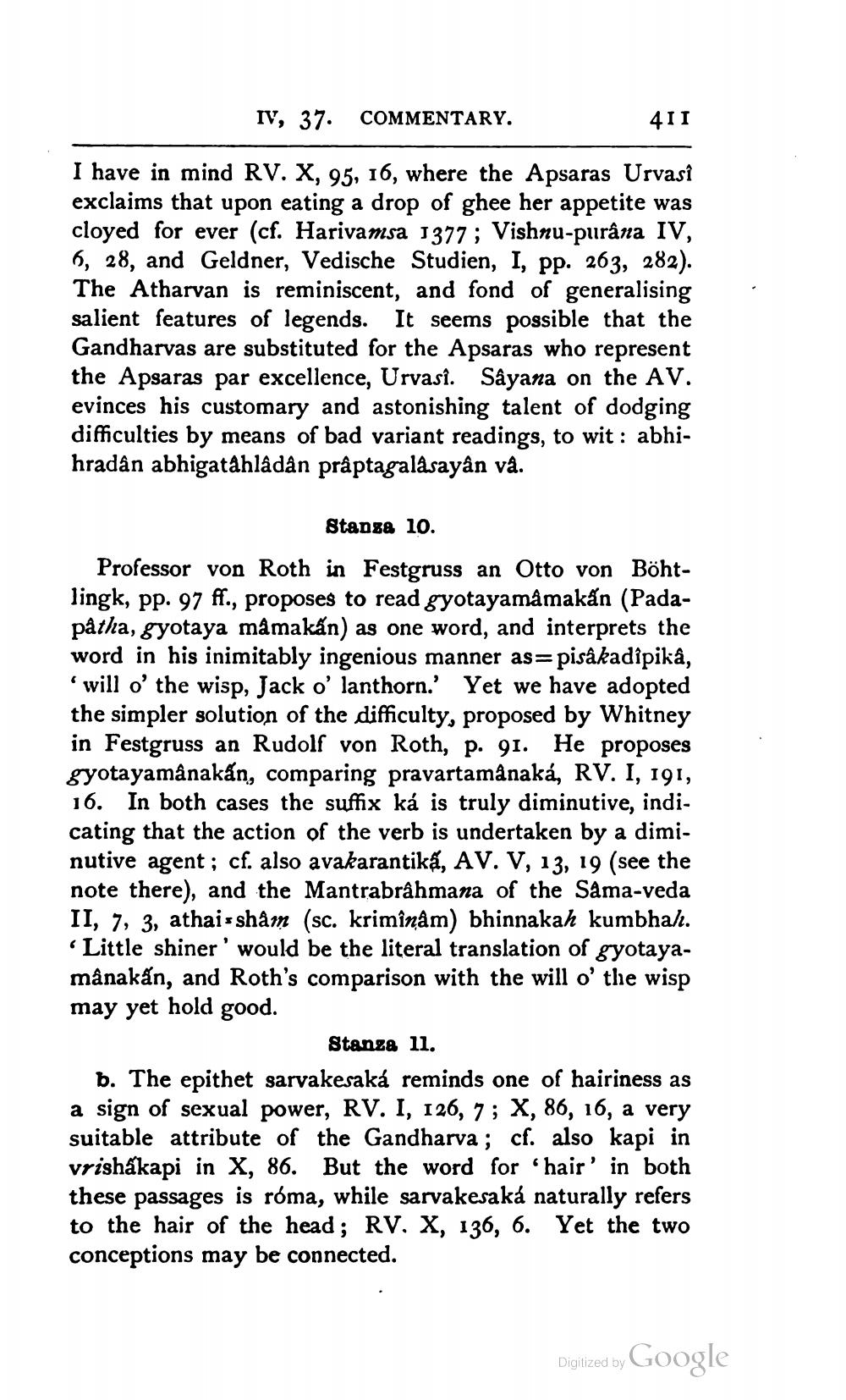________________
IV, 37. COMMENTARY.
411
I have in mind RV. X, 95, 16, where the Apsaras Urvasi exclaims that upon eating a drop of ghee her appetite was cloyed for ever (cf. Harivamsa 1377 ; Vishnu-purâna IV, 6, 28, and Geldner, Vedische Studien, I, pp. 263, 282). The Atharvan is reminiscent, and fond of generalising salient features of legends. It seems possible that the Gandharvas are substituted for the Apsaras who represent the Apsaras par excellence, Urvasi. Sâyana on the AV. evinces his customary and astonishing talent of dodging difficulties by means of bad variant readings, to wit: abhihradân abhigatahladân prâptagalasayân và.
Stanxa 10. Professor von Roth in Festgruss an Otto von Böhtlingk, pp. 97 ff., proposes to read gyotayamamakán (Padapåtha, gyotaya mamakán) as one word, and interprets the word in his inimitably ingenious manner as= pisâkadipika, • will o' the wisp, Jack o' lanthorn.' Yet we have adopted the simpler solution of the difficulty, proposed by Whitney in Festgruss an Rudolf von Roth, p. 91. He proposes syotayamânakán, comparing pravartamânaká, RV. I, 191, 16. In both cases the suffix ká is truly diminutive, indicating that the action of the verb is undertaken by a diminutive agent; cf. also avakarantika, AV. V, 13, 19 (see the note there), and the Mantrabrâhmana of the Sama-veda II, 7, 3, athaisshåm (sc. kriminâm) bhinnakah kumbhal. * Little shiner' would be the literal translation of gyotayamånakán, and Roth's comparison with the will o' the wisp may yet hold good.
Stanza 11. b. The epithet sarvakesaká reminds one of hairiness as a sign of sexual power, RV. I, 126, 7; X, 86, 16, a very suitable attribute of the Gandharva; cf. also kapi in vrishákapi in X, 86. But the word for 'hair' in both these passages is róma, while sarvakesaká naturally refers to the hair of the head; RV. X, 136, 6. Yet the two conceptions may be connected.
Digized by Google
Digitized by




